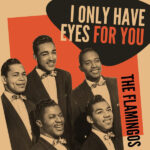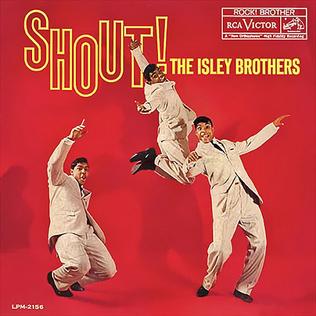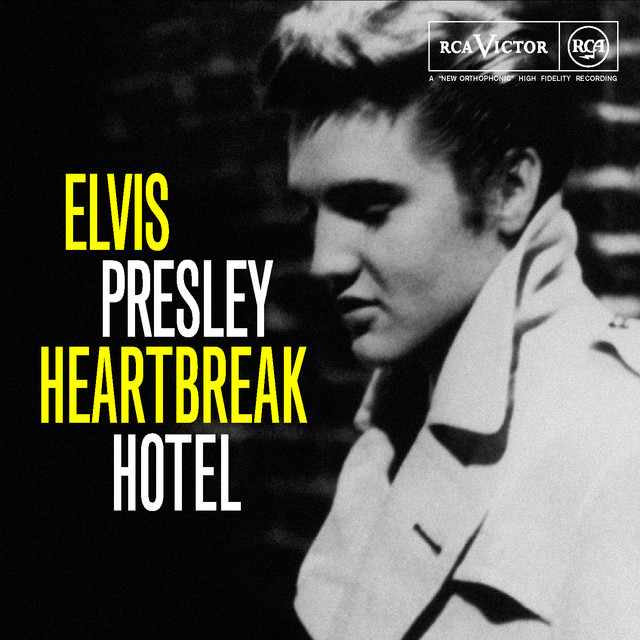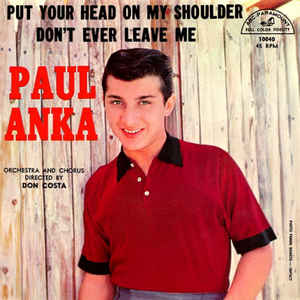 In 1959, The Flamingos released a song that would become one of the most iconic examples of doo-wop and a timeless declaration of romantic devotion: “I Only Have Eyes for You.” Originally written in 1934 by Harry Warren and Al Dubin, the Flamingos transformed the song into an ethereal, slow-burning masterpiece that highlighted their impeccable vocal harmonies and emotional sensitivity. Their version elevated the track from a standard pop tune into a haunting, intimate expression of love, where each note and harmony creates an atmosphere of longing and intimacy. The arrangement is both delicate and meticulously crafted, with lush vocal layering, subtle instrumentation, and a dreamlike quality that has captivated listeners for generations. In this version, love is portrayed not just as desire or attraction, but as singular, consuming devotion, a sentiment that resonates across time. With its smooth falsetto leads, precise harmonies, and shimmering reverb, The Flamingos’ “I Only Have Eyes for You” exemplifies the golden age of doo-wop while simultaneously transcending its era, becoming a benchmark of vocal artistry and emotional expression. Its enduring charm lies in the way it evokes the universal experience of love as all-encompassing, transcending both the constraints of time and the stylistic trappings of its era, making it a song that continues to enchant listeners nearly seven decades later.
In 1959, The Flamingos released a song that would become one of the most iconic examples of doo-wop and a timeless declaration of romantic devotion: “I Only Have Eyes for You.” Originally written in 1934 by Harry Warren and Al Dubin, the Flamingos transformed the song into an ethereal, slow-burning masterpiece that highlighted their impeccable vocal harmonies and emotional sensitivity. Their version elevated the track from a standard pop tune into a haunting, intimate expression of love, where each note and harmony creates an atmosphere of longing and intimacy. The arrangement is both delicate and meticulously crafted, with lush vocal layering, subtle instrumentation, and a dreamlike quality that has captivated listeners for generations. In this version, love is portrayed not just as desire or attraction, but as singular, consuming devotion, a sentiment that resonates across time. With its smooth falsetto leads, precise harmonies, and shimmering reverb, The Flamingos’ “I Only Have Eyes for You” exemplifies the golden age of doo-wop while simultaneously transcending its era, becoming a benchmark of vocal artistry and emotional expression. Its enduring charm lies in the way it evokes the universal experience of love as all-encompassing, transcending both the constraints of time and the stylistic trappings of its era, making it a song that continues to enchant listeners nearly seven decades later.
The Flamingos: Masters of Harmony and Emotional Nuance
By the late 1950s, The Flamingos had established themselves as one of the premier doo-wop groups in American music. Known for their precise harmonies, smooth vocal delivery, and ability to convey deep emotion, the group brought a level of sophistication and artistry to the genre that set them apart from many of their contemporaries.
The members of The Flamingos at the time included Nate Nelson, Zeke Carey, Paul Wilson, and Terry Johnson. Each contributed to the group’s signature sound: velvety lead vocals, intricate harmonies, and subtle background flourishes that enhanced the emotional impact of each song. In “I Only Have Eyes for You,” their collective talent is on full display, creating a vocal tapestry that is both intimate and expansive, capturing the listener’s attention with every note.
The Flamingos were not merely performers; they were innovators, pushing the boundaries of vocal harmony and integrating elements of jazz, gospel, and pop into their doo-wop framework. This sophistication is part of what makes their rendition of “I Only Have Eyes for You” feel timeless—it is at once rooted in the musical style of its era and transcendent in its emotional expression.
Origins and Transformation of the Song
“I Only Have Eyes for You” was written by the prolific songwriting duo Harry Warren and Al Dubin in 1934. Originally intended for the film Dames, it was performed in a traditional pop style typical of the era. While the song enjoyed popularity, it was The Flamingos’ 1959 version that redefined it for a new generation, blending doo-wop harmonies with a dreamy, almost otherworldly atmosphere.
The transformation of the song involved slowing down the tempo, emphasizing falsetto leads, and layering the voices to create a rich, echoing sound that evokes intimacy and longing. The instrumentation is understated, often reduced to soft bass lines, gentle percussion, and subtle piano or guitar accents, allowing the vocals to remain the focal point. This arrangement highlights the lyrical content—an obsessive, singular devotion to one person—by creating a sonic space that feels both personal and expansive, like a private confession magnified by reverberation.
Vocal Harmony and Musical Craftsmanship
The Flamingos’ arrangement is distinguished by its meticulous vocal craftsmanship. The song opens with a delicate, echoing falsetto, immediately establishing an ethereal, romantic mood. From there, the group’s harmonies weave in and out, creating a lush, multilayered texture that draws the listener into the emotional core of the song.
Lead vocalist Nate Nelson’s tender delivery carries the song’s narrative, expressing vulnerability, desire, and devotion with subtle inflection. The background harmonies, expertly arranged by Terry Johnson, provide depth and resonance, reinforcing the song’s emotional intensity. The group’s use of falsetto, call-and-response patterns, and smooth harmonic shifts exemplifies the technical sophistication of top-tier doo-wop groups, turning a simple love song into a masterpiece of vocal artistry.
The song’s haunting quality is further enhanced by its use of reverb and echo effects, creating a sense of space and dreamlike suspension. This production choice, though modest by modern standards, was innovative for its time and contributes significantly to the song’s timeless and otherworldly aura.
Lyrics and Themes
The lyrics of “I Only Have Eyes for You” are deceptively simple but profoundly resonant. They convey a singular focus on one’s beloved, expressing devotion that transcends distraction, doubt, or circumstance. Lines such as:
“I don’t know if you’re an angel
Or a devil in disguise
I only have eyes for you”
highlight the intensity of this focus, suggesting that love, in its purest form, can overshadow everything else. This theme of undivided attention and emotional absorption is central to the song’s enduring appeal.
By combining universal themes of love and desire with an intimate, confessional vocal style, The Flamingos elevate the song from a standard pop tune to a deeply personal and emotionally affecting experience. Listeners are not merely hearing a love song—they are being invited into a private moment of yearning and devotion.
Production and Sonic Aesthetic
The production of “I Only Have Eyes for You” emphasizes clarity, intimacy, and resonance. Unlike many contemporary recordings that relied on dense instrumentation or elaborate arrangements, this track allows the vocals to remain front and center, supported by understated piano, soft bass, and minimal percussion. This minimalist approach ensures that every harmonic nuance, every inflection, and every echo contributes directly to the song’s emotional impact.
The sonic aesthetic, characterized by the use of subtle reverb and layering, creates an almost cinematic atmosphere, where the listener feels enveloped in sound. This production style enhances the song’s dreamlike quality, giving the impression that the vocalist is speaking directly to the listener across a reverberating space, blurring the line between performance and intimate confession.
Cultural Impact and Reception
Upon its release in 1959, The Flamingos’ “I Only Have Eyes for You” received critical acclaim and became a definitive example of the doo-wop genre. It has been recognized for its technical excellence, emotional depth, and enduring popularity, appearing on numerous “greatest songs” lists and continuing to be celebrated in contemporary media.
The song’s cultural impact extends beyond its initial success. It has been covered by countless artists across genres, from pop to jazz to indie, each interpreting the track’s haunting romance in their own way. Its inclusion in films, television shows, and commercials has cemented its status as a cultural touchstone, representing both the doo-wop era and timeless expressions of romantic devotion.
Moreover, the song played a role in popularizing doo-wop as a sophisticated, emotionally resonant musical form. While many doo-wop tracks focused on catchy hooks or rhythmic energy, “I Only Have Eyes for You” demonstrated the genre’s potential for nuanced expression, influencing subsequent vocal groups and popular music in general.
Live Performances and Legacy
The Flamingos’ live performances of “I Only Have Eyes for You” captured the same ethereal quality as the studio recording, emphasizing vocal precision, emotional intimacy, and harmonic layering. Audiences were drawn to the group’s ability to recreate the song’s haunting beauty in real time, with falsetto leads and smooth harmonies maintaining their hypnotic effect.
Over the decades, the song has continued to resonate with listeners, appearing on soundtracks, in romantic scenes, and as part of retrospectives on doo-wop and 1950s music. Its ability to evoke nostalgia, longing, and timeless romance ensures its place not only in the history of doo-wop but also in the broader canon of American popular music.
Why “I Only Have Eyes for You” Matters Today
The enduring relevance of “I Only Have Eyes for You” lies in its emotional authenticity, technical brilliance, and universal themes. In a world of rapidly changing musical trends, the song continues to captivate because it speaks directly to fundamental human experiences—love, longing, devotion, and the beauty of being singularly focused on another person.
The Flamingos’ interpretation remains a benchmark for vocal artistry, demonstrating how simplicity, precision, and emotional sincerity can create a transcendent musical experience. It is a reminder that the power of music often lies in its ability to communicate intimacy and emotion, rather than relying solely on novelty or complexity.
Final Reflections
“I Only Have Eyes for You” by The Flamingos is more than a classic doo-wop song; it is a timeless expression of love, devotion, and musical artistry. Released in 1959, it showcases the group’s mastery of vocal harmony, emotional nuance, and atmospheric production. Its ethereal sound, haunting falsettos, and lyrical focus on singular devotion combine to create a song that remains deeply moving and culturally significant.
This track exemplifies the power of music to capture both specific stylistic elements and universal human experiences. It is a testament to The Flamingos’ skill, creativity, and ability to convey profound emotion through vocal artistry. Nearly seven decades later, “I Only Have Eyes for You” continues to enchant, inspire, and define the genre of doo-wop, standing as a monumental achievement in American popular music and a timeless ode to love itself.


